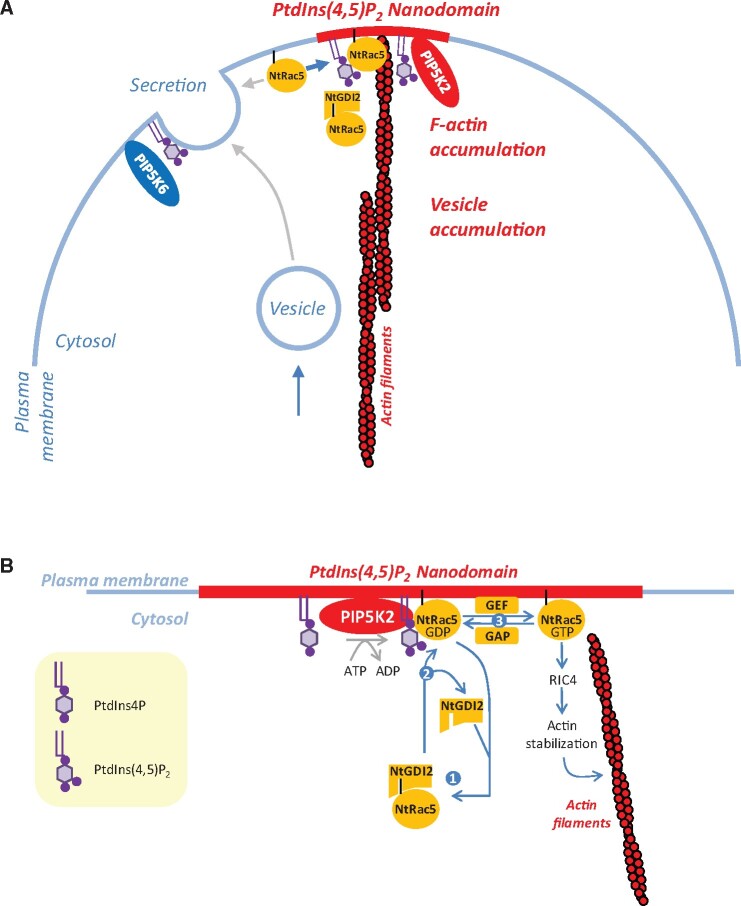Figure 9.
Model for the influence of nanodomain-associated PtdIns(4,5)P2 and PIP5K2 orthologs on NtRac5 and actin dynamics. Polar tip growth of pollen tubes requires the close spatio-temporal coordination of actin dynamics and secretion/endocytosis. A, Nano-organization of the plasma membrane with PIP5K2 associating with nanodomains (red) and PIP5K6 distributing uniformly (blue) in the plasma membrane. PtdIns(4,5)P2 formed by PIP5K2 orthologs in nanodomains may act to stabilize the actin cytoskeleton (red filaments) through functional interplay with elements of ROP signaling, such as NtRac5 or NtRhoGDI2 (NtGDI2). Upon the overproduction of PtdIns(4,5)P2 in nanodomains, such as upon the overexpression of PIP5K2 orthologs, NtRac5-dependent effects might be shifted towards promoting F-actin accumulation (thick blue arrow), possibly at the expense of other functions (thin grey arrows). The diffusely localized PtdIns(4,5)P2 formed by PIP5K6 serves a role in promoting secretion, as indicated. B, Proposed functional interplay of nanodomain-associated PtdIns(4,5)P2 with ROP signaling. PtdIns(4,5)P2 may act as a GDF on NtGDI2 to promote NtRac5-dependent stabilization of the actin cytoskeleton. A pool of plasma membrane-associated NtRac5 is in a dynamic equilibrium with cytosolic NtRac5 bound to NtGDI2 (point 1). PtdIns(4,5)P2 formed by PIP5K2 in plasma membrane nanodomains might act as a GDF to destabilize cytosolic NtRhoGDI2/NtRac5 complexes (point 2), thereby releasing more NtRac5 to the plasma membrane. At the plasma membrane, NtRac5 can be activated by GEFs to NtRac5-GTP, which initiates a signaling cascade that stabilizes actin (point 3). Other explanations are possible. GAP, GTPase-activating protein; GEF, Guanidine nucleotide exchange factor; PtdIns4P, phosphatidylinositol 4-phosphate; PtdIns(4,5)P2, phosphatidylinositol 4,5-bisphosphate; RIC, ROP-interactive CRIB-domain containing protein.

